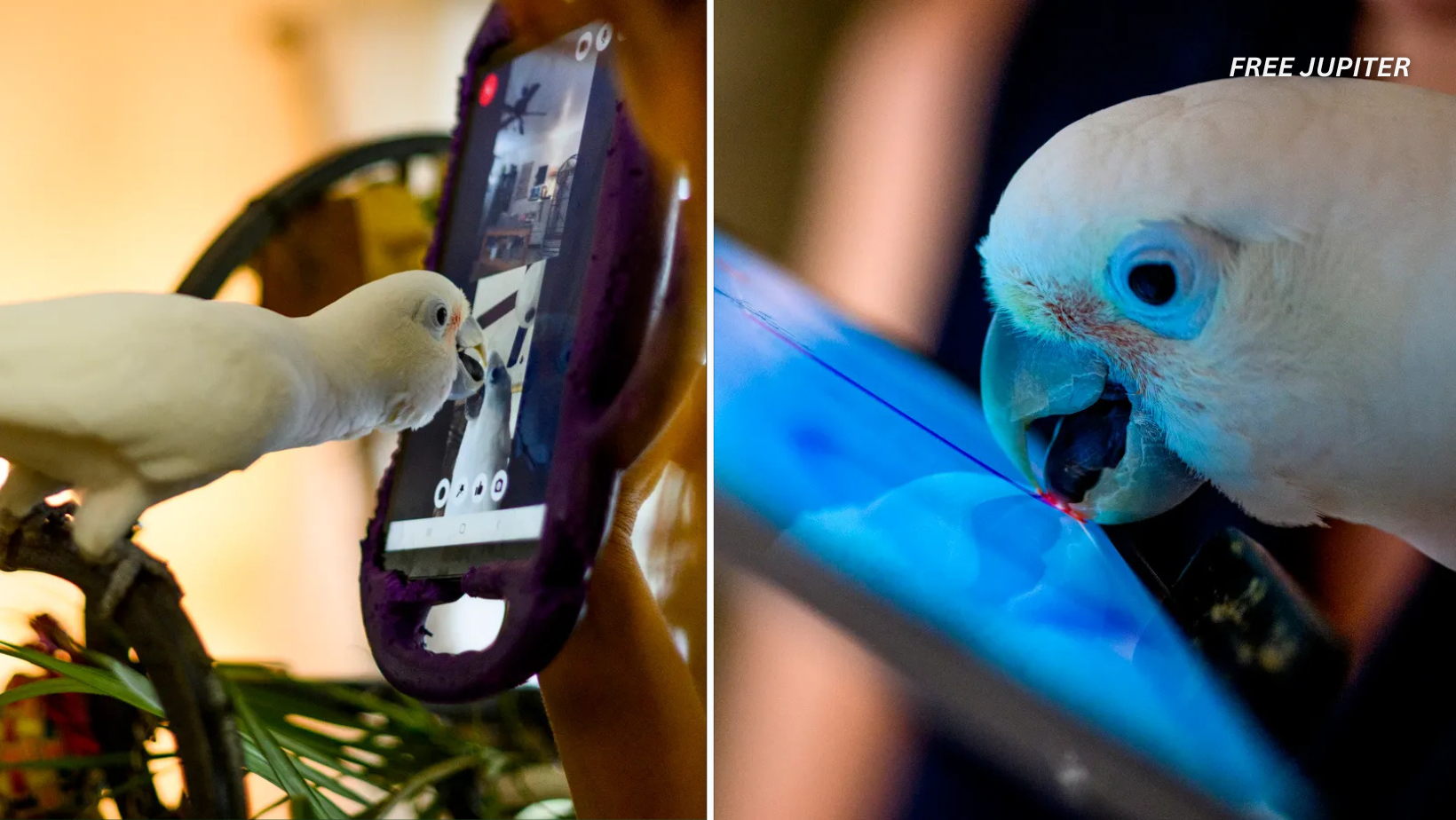Friendly Note: FreeJupiter.com shares general info for curious minds 🌟 Please fact-check all claims—and always check health matters with a professional 💙
Imagine a world where parrots, those famously chatty and intelligent birds, can reach out and connect with their feathered peers across cities or even continents – all with a tap of their beak. Recent research is turning this vision into reality, revealing not only the technical savvy of these birds but also their deep need for companionship and engagement. By teaching parrots to initiate video calls, scientists have opened a window into the emotional and social lives of these vibrant creatures, offering new hope for the millions of pet birds living in relative solitude.
The Social Lives of Parrots: From Flocks to Screens
Parrots in the wild are rarely alone. They thrive in bustling flocks, constantly communicating, playing, and learning from one another. In stark contrast, many pet parrots spend much of their lives in isolation, often as the sole bird in a household. This lack of social interaction can lead to boredom, stress, and even self-harming behaviors such as feather-plucking.
Recognizing these challenges, researchers from Northeastern University, the University of Glasgow, and MIT devised a study to see if digital technology could help bridge the gap. Their goal was to empower parrots to connect with others in a way that mirrors the natural socialization they would experience in the wild.
Training Parrots for the Digital Age
The study began by recruiting a diverse group of parrots and their dedicated owners, many of whom were already part of Parrot Kindergarten, an online training community. The birds were introduced to tablets and smartphones, not as passive viewers, but as active participants.
How the Training Worked:
- Parrots learned to signal their desire to make a call by ringing a bell placed in their enclosure.
- Owners then presented a tablet displaying photos of other participating parrots.
- The bird would tap or peck at the image of the parrot they wished to call, initiating a live video chat using apps like Messenger.
- No food rewards were used; the motivation was purely social.
This process gave parrots control over their interactions, allowing them to decide when and whom they wanted to contact. Out of 18 initial participants, 15 completed the study, while three opted out early on.
Read more: Florida Man Gored by Massive Bison at Yellowstone After Ignoring Wildlife Distance Guidelines
Live Calls vs. Pre-Recorded Videos: Parrots Know the Difference
To truly understand how parrots experience digital interaction, researchers compared two scenarios: live video calls with other birds and watching pre-recorded videos of fellow parrots. The results were striking.
Key Findings:
- Parrots overwhelmingly preferred live calls, initiating them far more often than they chose to watch pre-recorded footage.
- Engagement was much higher during live interactions; birds spent more time on calls and showed greater enthusiasm, such as singing, playing, or displaying toys to their virtual companions.
- When the experiment shifted to pre-recorded content, both the number and duration of calls dropped significantly, suggesting parrots can distinguish between live and recorded video and value real-time connection.
This ability to discern live interaction from playback demonstrates a level of cognitive sophistication that aligns with what scientists know about parrot intelligence.
Building Friendships and Learning New Skills
The study revealed that parrots are not only capable of using technology but also of forming meaningful relationships through it. Birds showed clear preferences, repeatedly calling the same individuals and even developing reciprocal bonds.
Examples of Social and Cognitive Growth:
- Some parrots learned new behaviors from their video friends, such as different ways to forage, fly, or vocalize.
- Older or less active birds found renewed energy and interest through these interactions, with owners noting their pets seemed more lively and engaged after calls.
- In some cases, birds even appeared to bond with the human caretakers of their virtual companions, extending their social networks beyond their own species.
This peer-to-peer learning echoes the way wild parrots pick up skills and habits from their flock, reinforcing the value of social enrichment for captive birds.
Read more: Breakthrough Molecule May Treat Patients With Rare and Debilitating Mitochondrial Diseases
The Human Element: Careful Supervision and Ethical Considerations
While the technology offers exciting possibilities, researchers were careful to ensure the welfare of the birds throughout the study. Owners were trained to monitor their parrots closely, ending calls at any sign of stress, aggression, or disinterest. This hands-on approach was crucial to preventing negative experiences and ensuring that the birds’ autonomy was respected.
Important Guidelines:
- Only experienced handlers participated, and all interactions were closely supervised.
- Calls were limited to a maximum of five minutes to prevent overstimulation.
- Birds could end a call simply by leaving the area or losing interest, giving them full control over their participation.
The researchers caution against casual or unsupervised use of video calling for pet parrots, emphasizing that not all birds may react positively and that careful introduction and monitoring are essential.
A Glimpse Into the Future: The ‘Animal Internet’
This research is part of a broader movement to use digital technology to enrich the lives of animals, sometimes called the “animal internet.” By giving animals agency to interact with each other and with humans in new ways, scientists hope to combat loneliness and improve welfare for pets and captive creatures worldwide.
Potential Applications and Next Steps:
- The technology could be adapted for other social animals, such as dogs, cats, or even zoo animals.
- Video calling may offer a safe alternative for birds at risk of infectious diseases, such as avian ganglioneuritis, which can make in-person playdates dangerous.
- Future studies may explore interactive games or other digital experiences tailored to the unique needs and abilities of different species.
Dr. Ilyena Hirskyj-Douglas, a lead researcher on the project, sees this as just the beginning, noting that as technology becomes more integrated into our homes, it offers new opportunities to support the well-being of animals who share our lives.
Owner and Parrot Perspectives: Stories From the Study
Feedback from both birds and their human companions was overwhelmingly positive. Owners reported that their parrots seemed happier, more active, and more vocal after regular video calls. Some birds even developed routines around their screen time, eagerly signaling for calls at specific times of day.
These anecdotes underscore the importance of social connection for parrots and the potential for technology to enhance their lives in captivity.
Conclusion: A New Era of Avian Connection
The success of this study challenges long-held assumptions about the limitations of animal-technology interaction. Parrots have shown themselves to be not only capable of mastering digital tools but also eager to use them for meaningful social engagement. By giving these birds the power to choose when and how they connect, researchers have taken a significant step toward improving the welfare of captive parrots and perhaps other animals as well.
Read more: Marvel Actor Spends Millions To Bring Back The Wholly Mammoth By 2028
As the “animal internet” continues to evolve, it opens up new possibilities for enriching the lives of pets everywhere. For parrots, at least, the future looks a little brighter-and a lot more connected-thanks to the simple joy of a video call.










